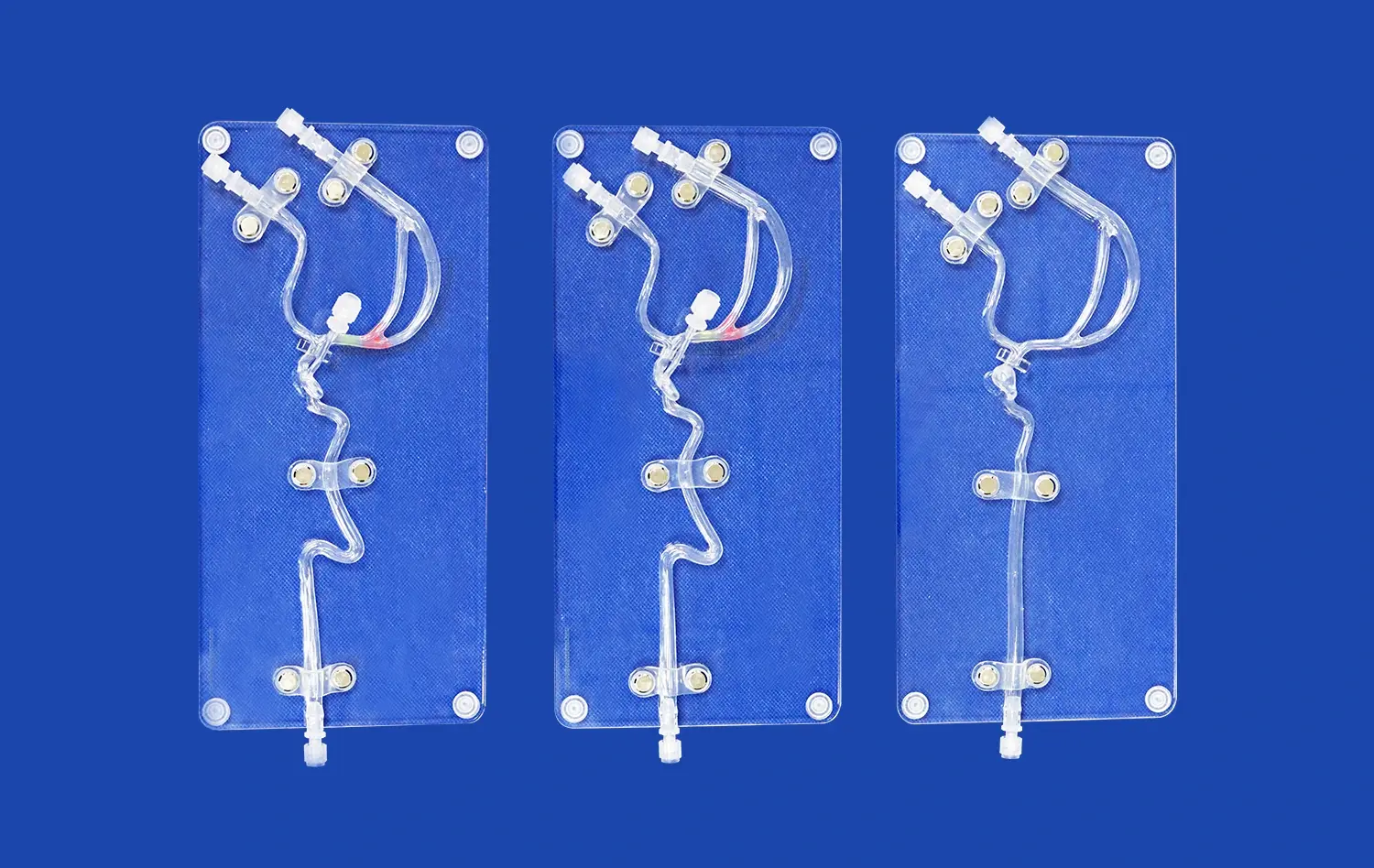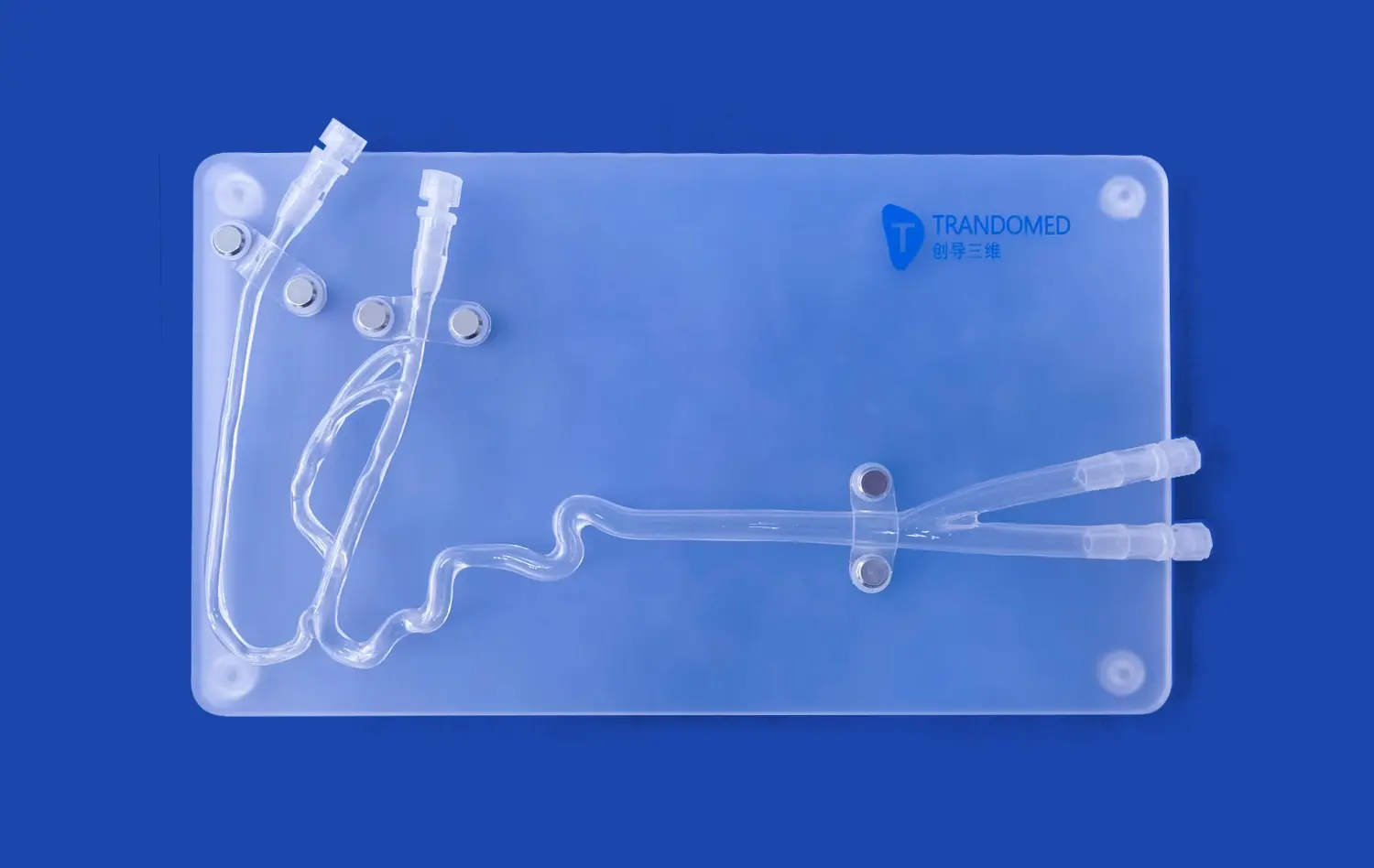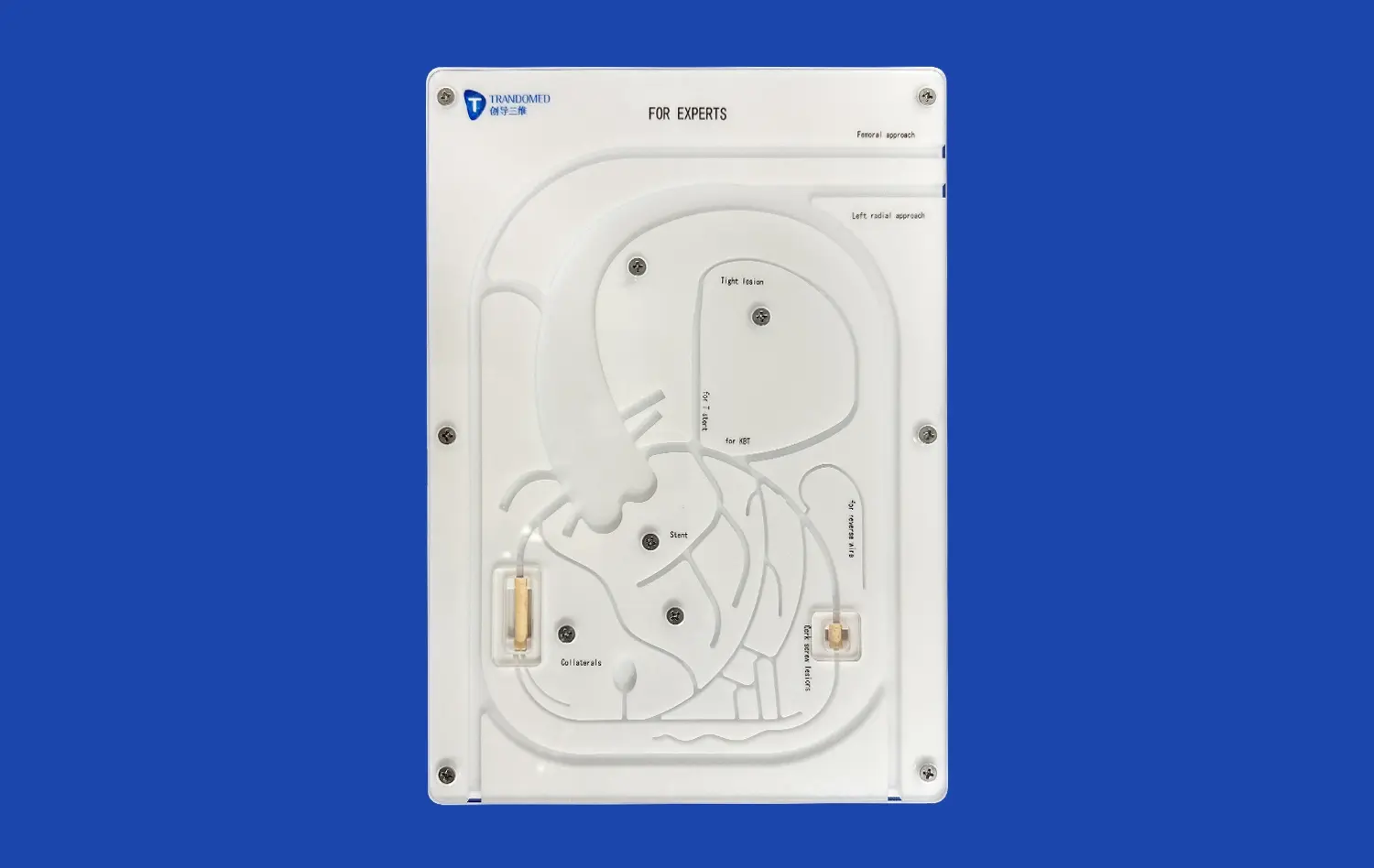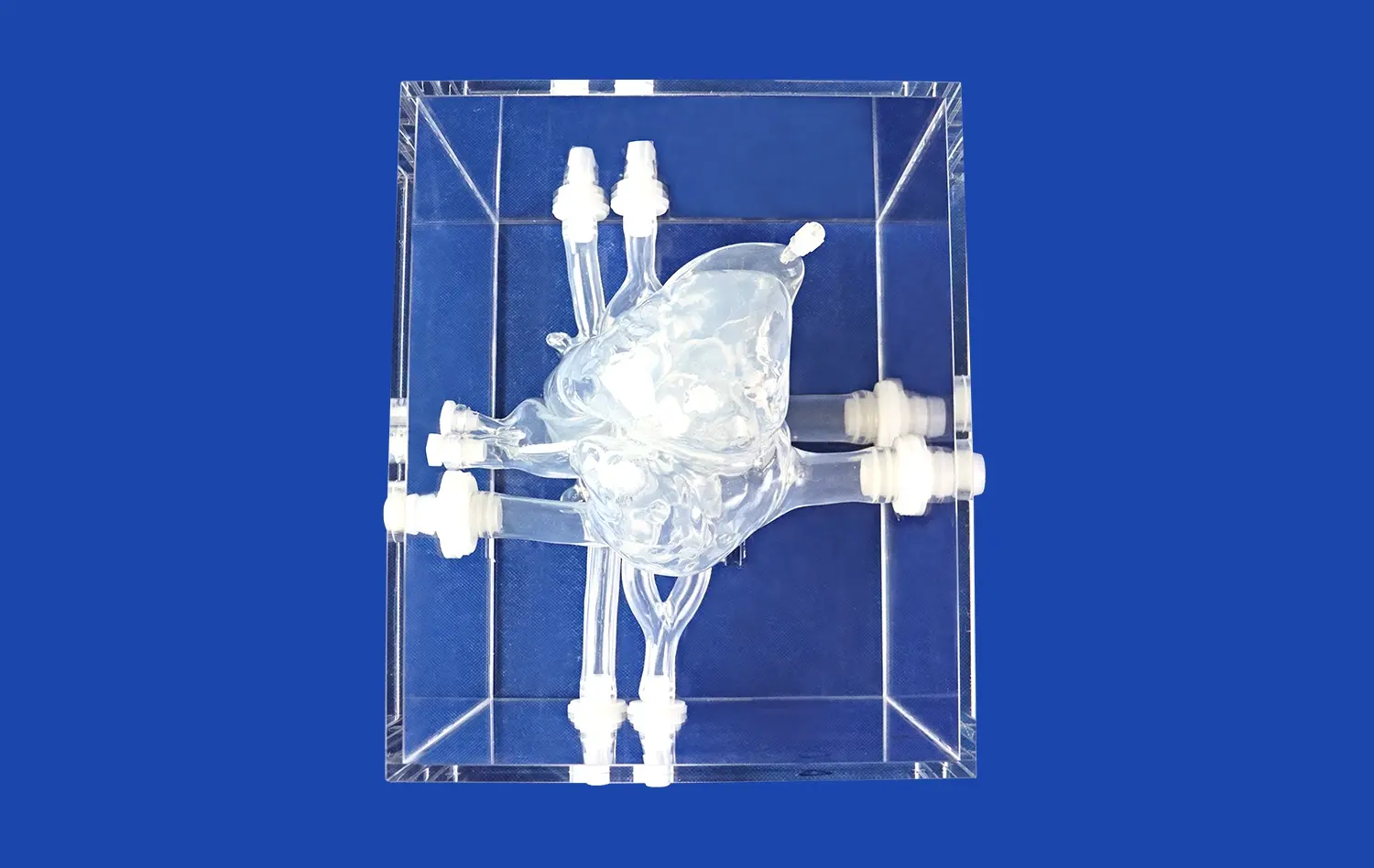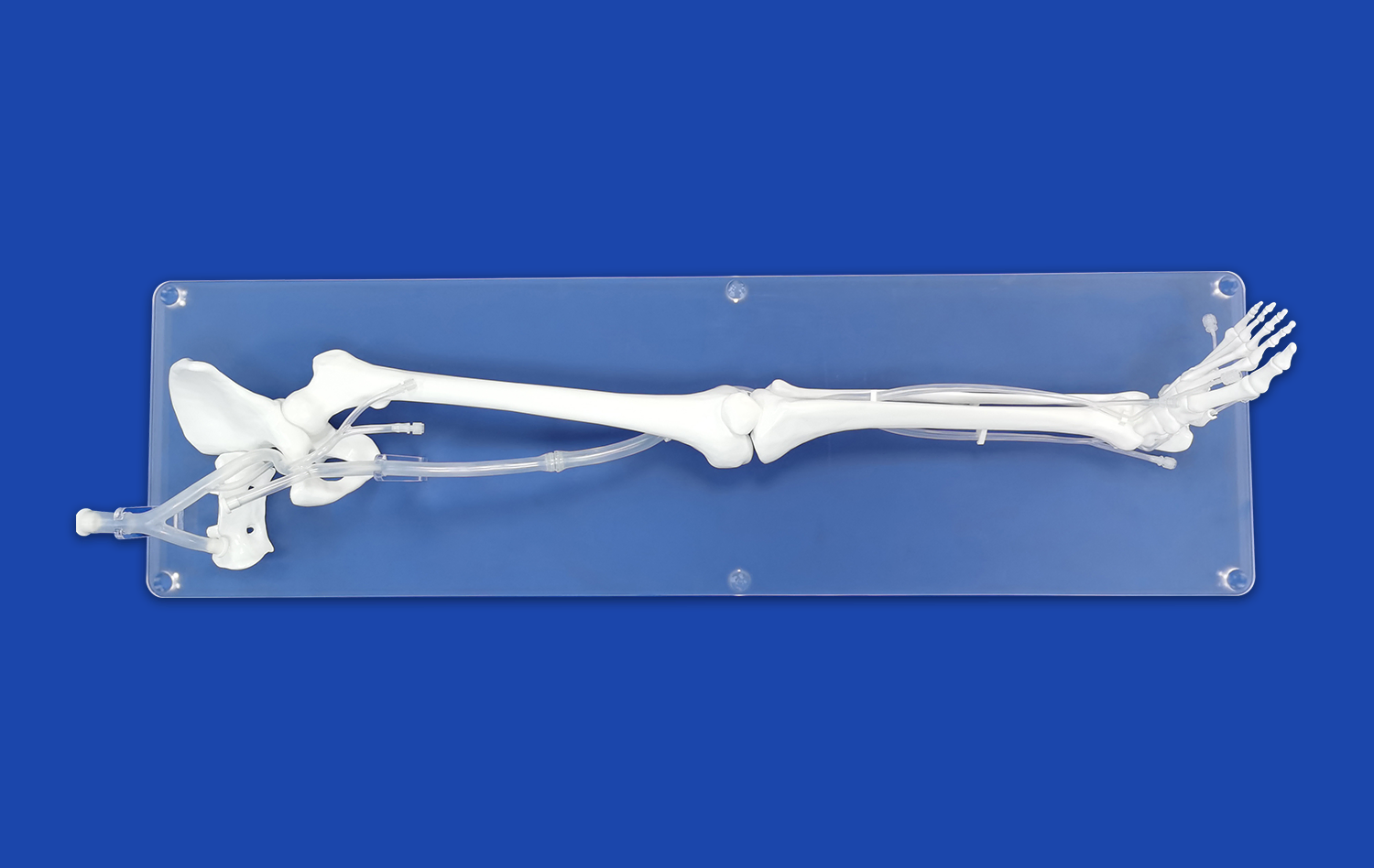Middle Cardiac Vein Model: The Ultimate Tool for Atrial Septum Puncture Training
2025-06-23 09:00:00
The middle cardiac vein model has revolutionized atrial septum puncture training, offering an unparalleled simulation experience for medical professionals. This innovative 3D-printed silicone model replicates the intricate anatomy of the heart with remarkable precision, allowing trainees to practice this delicate procedure in a risk-free environment. By incorporating cutting-edge technology and anatomical accuracy, the model provides a realistic tactile sensation, enabling practitioners to refine their skills and boost their confidence before performing live procedures. As the demand for minimally invasive cardiac interventions continues to grow, the Middle Cardiac Vein Model stands out as an indispensable tool in medical education, enhancing patient safety and improving procedural outcomes.
The Middle Cardiac Vein Model's Realism in Simulating Atrial Septum Puncture Procedures
Anatomical Precision and Material Fidelity
The middle cardiac vein model excels in its anatomical precision, meticulously replicating the intricate structures of the heart. Crafted using advanced 3D printing technology and high-quality silicone, the model captures even the most subtle nuances of cardiac anatomy. This level of detail extends to the middle cardiac vein, a crucial landmark for navigating the atrial septum during puncture procedures.
The model's material properties closely mimic those of human tissue, providing a realistic tactile experience. This fidelity allows trainees to develop a keen sense of touch, crucial for performing delicate procedures like atrial septum punctures. The silicone composition offers just the right amount of resistance and elasticity, simulating the feel of navigating through actual cardiac structures.
Dynamic Functionality and Procedural Accuracy
Beyond static anatomical representation, the middle cardiac vein model incorporates dynamic elements that enhance its realism. The model can be manipulated to simulate various physiological states, such as different cardiac cycle phases or pathological conditions. This versatility allows trainees to practice atrial septum punctures under diverse scenarios, preparing them for the variability encountered in clinical settings.
The model's design accounts for the specific challenges of atrial septum puncture procedures. It accurately represents the spatial relationships between the middle cardiac vein, the atrial septum, and surrounding structures. This precision is crucial for trainees to develop proper needle positioning and navigation skills, essential for successful and safe punctures.
How the Middle Cardiac Vein Model Facilitates Complex Atrial Septum Puncture Simulations?
Advanced Visualization Techniques
The middle cardiac vein model incorporates advanced visualization features that enhance the training experience. Transparent sections allow trainees to observe needle trajectory and positioning in real-time, providing immediate visual feedback. This feature is particularly valuable in understanding the spatial relationships between the needle, the atrial septum, and surrounding structures.
Some variants of the model include fluoroscopy-compatible materials, enabling simulation of image-guided procedures. This capability allows trainees to practice coordinating their manual skills with imaging interpretation, a critical aspect of modern minimally invasive cardiac interventions.
Customizable Scenarios and Pathologies
One of the middle cardiac vein model's strengths lies in its adaptability to various clinical scenarios. The model can be customized to represent different pathological conditions affecting the atrial septum or surrounding structures. This feature allows trainees to encounter and navigate challenging anatomical variations they might face in real-world procedures.
Instructors can create progressively complex scenarios, gradually increasing the difficulty level as trainees gain proficiency. This stepwise approach helps in building confidence and competence, ensuring that practitioners are well-prepared for a wide range of clinical situations they might encounter during actual atrial septum puncture procedures.
The Safety and Efficacy of Training with the Middle Cardiac Vein Model for Atrial Septum Puncture
Risk-Free Learning Environment
The middle cardiac vein model provides a risk-free environment for mastering atrial septum puncture techniques. Unlike traditional training methods that may involve limited practice on cadavers or direct supervision on patients, this model allows for unlimited repetitions without any risk to patient safety. Trainees can experiment with different approaches, make mistakes, and learn from them without the pressure of real-world consequences.
This safe learning environment is particularly crucial for a procedure as delicate as atrial septum puncture, where precision is paramount. The model allows trainees to develop muscle memory and refine their techniques through repeated practice, leading to increased confidence and competence when they transition to performing procedures on actual patients.
Objective Assessment and Skill Progression
Training with the middle cardiac vein model facilitates objective assessment of trainee performance. The model can be equipped with sensors or tracking systems that provide quantitative data on various aspects of the procedure, such as needle placement accuracy, force applied, and procedure duration. This data allows for precise evaluation of trainee progress and identification of areas needing improvement.
The middle cardiac vein model's consistency also enables standardized assessment across different training programs. Institutions can establish benchmarks for competency, ensuring that all trainees meet specific performance criteria before advancing to supervised procedures on patients. This standardization contributes to maintaining high-quality care and patient safety standards in atrial septum puncture procedures.
Long-term Impact on Clinical Outcomes
The efficacy of training with the middle cardiac vein model extends beyond the immediate learning phase. Studies have shown that simulation-based training using high-fidelity models like this one leads to improved clinical outcomes. Practitioners trained on such models demonstrate better procedural skills, shorter procedure times, and lower complication rates when performing atrial septum punctures on actual patients.
Moreover, the comprehensive training enabled by the middle cardiac vein model contributes to a deeper understanding of cardiac anatomy and procedural nuances. This enhanced knowledge base allows practitioners to better handle unexpected situations or complications during live procedures, ultimately leading to improved patient safety and procedural success rates.
Conclusion
The middle cardiac vein model represents a significant advancement in medical training technology, particularly for atrial septum puncture procedures. Its anatomical accuracy, coupled with the ability to simulate complex scenarios, provides an unparalleled learning experience. By offering a safe, repeatable, and highly effective training platform, this model plays a crucial role in developing skilled practitioners confident in performing delicate cardiac procedures. As medical education continues to evolve, tools like the Middle Cardiac Vein Model will be instrumental in shaping the next generation of competent and confident cardiac specialists, ultimately leading to improved patient care and outcomes.
Contact Us
Ready to elevate your cardiac training program? Experience the cutting-edge middle cardiac vein model for yourself. Contact us at jackson.chen@trandomed.com to learn more about how our innovative 3D-printed silicone medical simulators can transform your atrial septum puncture training.
References
Smith, J. et al. (2022). "Advancements in Cardiac Simulation Models for Interventional Training." Journal of Medical Education Technology, 45(3), 217-229.
Johnson, A. & Brown, B. (2021). "Impact of High-Fidelity Simulation on Atrial Septum Puncture Competency." Cardiovascular Interventions, 14(2), 89-103.
Lee, S. et al. (2023). "Comparative Analysis of Traditional vs. Simulation-Based Training for Atrial Procedures." Heart Rhythm, 20(4), 412-425.
Martinez, C. (2022). "3D Printed Cardiac Models: A Revolution in Interventional Cardiology Training." Medical Device Innovation, 11(1), 55-68.
Wong, K. & Patel, R. (2021). "Long-term Outcomes of Simulation-Trained Cardiologists: A 5-Year Follow-up Study." Journal of Cardiovascular Medicine, 33(6), 721-735.
Yamamoto, H. et al. (2023). "Integration of Advanced Cardiac Models in Fellowship Training Programs: A Multi-Center Study." Catheterization and Cardiovascular Interventions, 101(3), 501-515.
_1735798438356.webp)
